- Home
- Peter Ackroyd
Venice Page 20
Venice Read online
Page 20
By the eleventh century, therefore, Venice had become an autonomous and influential state. In the latter part of that century it fought with the troops of Byzantium against the Norman invaders of Sicily. The reason for the Norman adventure, as well as all the other policies and actions of Venice in this period, was very simple. No other state or city could be allowed to block the mouth of the Adriatic, thus imprisoning Venice within its own waters. This was the great fear and the abiding preoccupation.
It has become customary to describe the eleventh century as the period in which Latin Christendom emerged triumphant. This is nowhere more powerfully evinced than in the history of the Crusades. They have been construed as a direct attack upon the Muslim world, or as a form of spiritual imperialism, but the participation of Venice in the First Crusade had no such motives. The Venetians were waging economic warfare by other means. They were not concerned with the cross, or with the sword, but with the purse. The point was that rival trading cities, Genoa and Pisa in particular, were already taking part. Venice could not permit its competitors to gain an advantage in the lucrative markets of Syria and Egypt. To have a permanent presence in Antioch, or in Jerusalem, would be a source of innumerable commercial benefits. So, in the summer of 1100, a fleet of two hundred Venetian ships arrived at Joppa (Jaffa); the Venetian commanders agreed to help the crusaders on condition that the merchants of their city were given the rights of free trade in all dominions recovered from the Saracens. The terms of this practical bargain were accepted. The Venetians were then despatched to besiege the town of Caifa (Haifa) and, having achieved the surrender of that place, they returned to the lagoon before the end of the year. They were not content, however, with this single and relatively simple victory. They wished to acquire more profit from their participation in the holy cause. They established trading stations within the Syrian ports, and began a lucrative business in transporting pilgrims to the newly captured Jerusalem.
On their way to Joppa, too, they had engaged in a peculiarly Venetian piece of business. The fleet had cast anchor at the ancient Lycian town of Myra (Bari), in search of the bones of Saint Nicholas who had been bishop of that place; the saint is now better known as the progenitor of Santa Claus but, in the eleventh century, he was revered as the patron saint of sailors. The Venetians, naturally enough, wanted him. It is alleged that they arrived in the town and put to the torture four Christians, the keepers of the shrine. They learned nothing of any consequence from these unholy proceedings, however, and made do with the theft of the bones of Saint Theodore. Theodore had been the patron saint of Venice before the arrival of Mark; he was a good second-best. Yet before their departure, according to the Venetian chronicles of Andrea Morosini, a wonderful fragrance issued from a recess beneath an altar in the church itself. The scent was that of Saint Nicholas. So he was removed, too, and brought back in triumph to Venice where his bones were lodged in the monastery of Saint Nicholas on the Lido. That is the story, at least. In fact the remains of Saint Nicholas, if such they are, have remained in Bari to this day. Whether the tale reveals more of Venetian mendacity, or of Venetian greed, is an open question.
The crusading venture had been a success for Venice, and in 1108 the Venetian fleet once more sailed under the flag of the cross. It may be noted that the governors of the city were particularly interested in the seaports of the Mediterranean, and that Venetian merchants were established in Acre, Jerusalem and elsewhere. Yet the attentions of the doge and senate were not confined to the principalities and powers of the Middle East. They thought it prudent to maintain and consolidate their presence on the mainland. They took Ferrara and Fano under their control, and moved against Padua. In the process they reasserted their rights over the principal rivers of the territory. On the other side of the Adriatic, they struggled with the Hungarians over the coastal regions of Dalmatia. They now had many enemies. The cities of the mainland were jealous of Venetian wealth, and fearful of Venetian power. The Norman kingdom of Sicily had long regarded Venice as a foe. The German empire of Hohenstaufen still laid claim to northern Italy.
There emerged one other formidable enemy. In 1119 the new emperor of Constantinople decreed that the trading privileges of Venice were at an end. He ordered all Venetian residents within the boundary of his empire to remove themselves and their business. He also proposed a treaty with the king of Hungary, thereby recognising Hungarian claims to the Venetian settlements in Dalmatia. The reaction of Venice was slow but assured. The Venetian fleet raided and sacked a number of Byzantine territories; Rhodes, Chios, Samos, Lesbos and Modon were some of the objects of their vengeance. They had set out to prove that they were now the single most important sea power in an area previously deemed to be the preserve of Constantinople. The emperor signed a new trade agreement with Venice in 1126.
The Venetian empire could justify its existence with the claim that trade, and not conquest, was its purpose. It naturalised its subjects with a spirit of enlightened commercialism. The motive was one of constructive self-aggrandisement. There was no true cult of empire, as there was in nineteenth-century London or in third-century Rome. There was no interest in massiveness or monumentality for their own sake. The only concession to the appetite for glory lay in the construction of gateways at key points in the city—the Torre dell’Orologio, the Porta della Carta, and the Arco Foscari among them. The gateway to the Arsenal is in every guide to the city. These were the Venetian equivalent of the triumphal arch, all the more striking in a city without a defensive wall.
Yet the Venetians who lived and traded in Constantinople, and in the other markets of the kingdom, became increasingly unpopular. They were judged to be arrogant and greedy. Away from Venice, the Venetians became insecure and fractious. They attacked their Genoese and Pisan rivals in trade, and refused to obey Byzantine edicts. They even stole the relics of saints from the churches of Constantinople. They were generally considered by their hosts to be vulgar, mere merchants looking for bargains. In turn the Venetians despised the Greeks, as effete and indolent. Then in 1171, on the command of the emperor, all the Venetians in Constantinople and elsewhere were arrested and imprisoned. A Venetian fleet, despatched to threaten the lands of the emperor, was reduced to impotence by the onset of plague. The commander of the unsuccessful expedition, on his return to Venice, was assassinated in the streets. It was the condign justice meted out to all perceived failures. The Byzantine emperor then sent a message to the doge in which he asserted that the Venetian nation had acted with great foolishness. He noted that they were “once vagabonds sunk in the utmost poverty” who had somehow claimed the right to imperial ambitions. But their abject failure and “insolence” had rendered them “a laughing stock.”
The leaders of Venice reacted cautiously. They formed alliances with some of the emperor’s enemies, and began an insidious campaign against Byzantine territories. There were secret talks and clandestine meetings. An accord was eventually reached and in 1183, twelve years after their arrest, the Venetian merchants were finally permitted to leave the prisons; a formal peace treaty between Venice and Byzantium was signed. It had represented a great crisis, and a vivid token of the real enmity between Constantinople and Venice; one city was dying, and the other was impatiently waiting to emerge supreme. Over the next few years there were pacts and agreements and messages of mutual confidence between the two cities. But in truth there could be no end to the struggle other than a fatal one.
The new eminence of Venice was exemplified by one of those scenes of living theatre at which Venice excelled. The characters in this lavish spectacle were the leaders of Latin Christendom. One was the emperor of Germany, Frederick Barbarossa, and the other was Pope Alexander III. Barbarossa laid claim to the Lombard states, and in particular to Milan; Pope Alexander strenuously resisted the claim, and allied himself with the Italian cities. The emperor was excommunicated. Nevertheless Barbarossa, spurned by the Church, had success with the sword. The Lombard cities were taken. Milan fell, and was largely
destroyed. Yet the dominion of Germany over this part of Italy was constantly being threatened by internal rebellion and by the open hostility of other Italian cities that looked to the pope for leadership. The weariness of continual warfare, and the inevitable cycle of victories and defeats, eventually disheartened both sides. The pope and the emperor contemplated the principles of an agreement. But where should they meet formally to ratify their pact?
Venice had largely kept itself aloof from the hostilities, on the very good ground that it is better to remain neutral in any battle between such powerful enemies. Venice did not in any case concern itself with the affairs of Italy if its own interests were not directly touched. So the most serene city became the most appropriate setting for the reconciliation of Barbarossa and Alexander. On 23 March 1177, the pontiff landed at the Lido and was received at the monastery of Saint Nicholas; he was no doubt shown the so-called “relics” of the saint himself. On the following day he sailed into Venice, where he was received by the doge. There were now long and difficult negotiations over the terms of the peace, with the emissaries of both sides raising objections and proposing alterations. Yet the pact was finally sealed. On 23 July the emperor was welcomed to the monastery of Saint Nicholas. On the following day he sailed to Venice, where Alexander awaited him. The pope sat in state upon the papal throne, which had been placed before the central gates of the basilica; he was surrounded by his cardinals, like some crowd scene from the sacred plays of the period. The emperor, disembarking from the glittering barge of the doge, walked in stately procession towards the pontiff. Before him walked the doge himself. Saint Mark’s Square was filled with spectators, eager to see the play unfold. When the emperor reached the papal throne he took off his scarlet cloak and, bowing to the ground, kissed the feet of the pope. Alexander, now weeping, raised up the emperor and gave him the kiss of peace. The audience now began to sing the Te Deum, and all the bells of the city rang out. It had been a great performance.
This dramatic scene was also used by Venice as an advertisement for the city’s strength and sense of justice. It was the seat of a general reconciliation. The city was the place of impartial judgement and of equity because it was subject to God alone. It played no part in the power politics of popes or emperors, except to heal the wounds caused by them. That, at least, was the message of the Venetian chroniclers in reporting these events from the summer of 1177. For that moment, when the bells pealed, Venice was the centre of the world. There were more immediate benefits also. The emperor granted trade privileges to Venice throughout his empire, and the pope gave Venice ecclesiastical dominion over Dalmatia.
The spectacle itself might have acted as an overture for the grander opera that was about to be performed. In the years that followed, Venice entered another, and greater, phase of its imperial power. It conquered and stripped Constantinople. A new scenario began with another holy war. The pope had declared a fourth crusade against the infidels and, in the early months of 1201, the French princes who had taken the cross came to Venice to plead for the ships that would transport them to the Holy Land. They were received in great state by the doge, and were asked to plead their case before the people of Venice in the basilica. So, after mass had been heard, one of their number stepped forward and declared that “no nation is so powerful on the seas as you”; after that piece of flattery, he implored the aid of the Venetian people. The princes then knelt down and wept. Immediately there were cries all around the basilica. “We grant it! We grant it!” It was a fine piece of stage management, in the best traditions of the city.
The doge, Enrico Dandolo, was already old and nearly blind. He was elected at the age of eighty-four, but he was one of those Venetian patriarchs whose tenacity and singleness of purpose were the visible proof of the city’s own ruthlessness. It was said that he had nourished a grievance against Constantinople ever since the mass imprisonment of 1171. According to one Byzantine Greek chronicler, “he boasted that so long as he failed to take revenge on them for what they had done to his people he was living under sentence of death.” It was even reported, in later chronicles, that he had been blinded by the Byzantines themselves when he had once travelled to the city as an ambassador; this is the stuff of legend only.
The carpenters of the Arsenal were set to work, engaged to build and equip enough ships to carry 4,500 horsemen and 30,000 soldiers. In return Venice demanded 84,000 silver marks. The efficiency of the shipbuilding yards was by now well known throughout Europe, and all of the ships were delivered on time. But there was one problem. The crusaders had been unable to find the money to pay for them. So a new arrangement was concluded. The Venetians would waive full payment, on condition that the crusaders would assist them in subduing the rebellious city of Zara on the Dalmatian coast. It was a diversion from the Holy Land, but the leaders of the forces of the cross considered it to be a necessary one. Three hundred ships left the lagoon in October 1202, to the chant of the Veni Creator, and sailed down the Adriatic. Zara, after a siege of five days, surrendered. Christian had turned against Christian rather than the common enemy of the Saracen. The pope, incensed by this unwelcome development, excommunicated the forces of the expedition. It is not reported that the Venetians, in particular, were in any way cowed or humbled by the papal wrath.
Once the Venetians were fully in possession of the town, they were surprised by the arrival of an unexpected guest. The son of the deposed emperor of Constantinople, Alexius Angelus, came to Dandolo in search of justice. He wished the crusaders to overthrow the usurper, on the throne of the empire, and reinstall his father. For his part he pledged to finance and otherwise assist the armies in their high purpose. It was an offer that could not be refused. It has often been surmised that Dandolo had held this aim in mind throughout all the preparations for the crusade, and that he had already determined that Constantinople rather than Syria was to be the destination of the Venetian fleet. There can be no doubt that Dandolo saw a great opportunity for advancement and enrichment in this war at the expense of Constantinople. But there are elements of adventitious chance in all the affairs of men. Dandolo could not have known that the French crusaders would be unable to honour their obligation, although it is likely that he knew in advance of the arrival of Alexius in Zara. The Venetians were always adept at taking advantage of chance and circumstance. Yet in another perspective the great events of the world seem, on close scrutiny, to be made up of a thousand singular elements and accidents and coincidences. In the midst of this swirling world it would be hard to detect a pattern. So we may say that it just happened. As a consequence of these events the power of Byzantium was extinguished, its city and empire weakened beyond repair.
The Venetian fleet, in aid of Alexius, moved against the city. On 24 June 1203, it sailed beside the walls. A French attack by land seemed to have failed and so, under the command of Dandolo, the Venetians tied their galleys together to form a united front; from the decks and turrets of the vessels, military engines discharged their fire into the city. Constantinople was in flames. Dandolo himself stood at the prow of the first ship that struck land. He was dressed in full armour, and the standard of Saint Mark flew at his side. At his urging the Venetian soldiers leapt from their vessels and scaled the ladders swung against the walls. There was some combat, but the forces of the Byzantines were overwhelmed by this swift attack from the sea. The banner of the republic was fixed on the rampart. The city was taken. The deposed emperor, on whose behalf Alexius had pleaded, was rescued from his dungeon and placed upon the throne. Alexius himself was crowned in the basilica of Saint Sophia, and took his place as co-ruler of the empire.
Yet the fatal decline of Constantinople was about to resume its inevitable course. Alexius had promised the crusaders more than he could achieve. He lacked finance and, more importantly, he had forfeited his authority among his countrymen by relying upon the forces of the crusaders to obtain the imperial crown. The citizens of Constantinople, instigated by fear and rumour, rebelled against the new e
mperor. Alexius was cut down, his father abandoned to his grief.
The Venetians and their allies now had to extinguish this rebellion, and bring the city under their rule. They had not come so far to be simply asked to leave. So once more, in March 1204, they laid siege to the city. On the eve of the assault Dandolo declared to his men that they must “be valiant. And with the help of Jesus Christ, milord Saint Mark, and the prowess of your bodies, you shall be tomorrow in possession of the city, and you shall all be rich.”
Once their victory was assured, the Christian armies, inflamed by greed and anger, began a general sack of the city. Constantinople was pillaged and burned. The wealthiest city of the world, filled with art and sculpture, was laid bare. Its citizens were slaughtered, the frenzy of blood-lust such that it seemed that the gates of hell had been opened. The palaces and houses of the city were ransacked. The churches were despoiled. The statues were melted down, and the pictures ripped apart. The tombs were opened, and the sacred vessels removed. It is reported that a prostitute was enthroned in the chair of the patriarch, in the basilica of Saint Sophia, from where she “hurled insults at Jesus Christ, and she sang bawdy songs, and danced immodestly in the holy place.” One chronicler claimed that the rapine exceeded any other since the creation of the world. And the Venetians were the principal agents of this despoliation. Much of the plunder found its way to Venice. The four great horses that surmount the basilica of Saint Mark’s are part of the fruit of that brutal victory.

 The Clerkenwell Tales
The Clerkenwell Tales The Canterbury Tales
The Canterbury Tales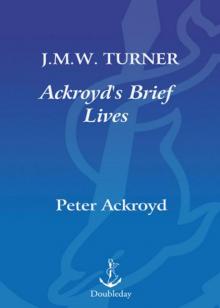 J. M. W. Turner
J. M. W. Turner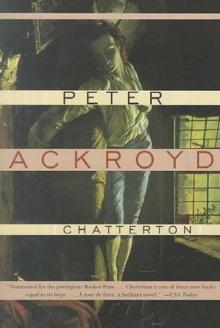 Chatterton
Chatterton The Canterbury Tales – A Retelling
The Canterbury Tales – A Retelling Alfred Hitchcock
Alfred Hitchcock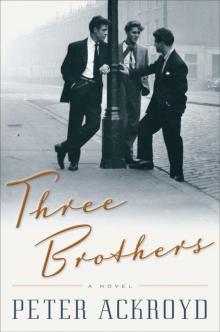 Three Brothers
Three Brothers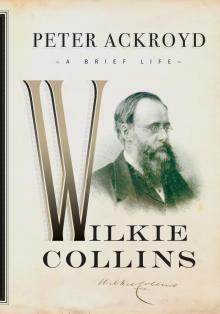 Wilkie Collins
Wilkie Collins Venice
Venice Poe
Poe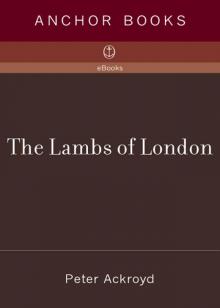 The Lambs of London
The Lambs of London London
London Queer City
Queer City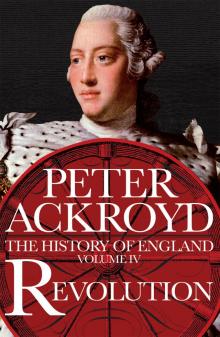 Revolution, a History of England, Volume 4
Revolution, a History of England, Volume 4 Venice: Pure City
Venice: Pure City Foundation
Foundation Thames
Thames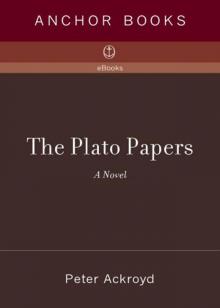 The Plato Papers
The Plato Papers The house of Doctor Dee
The house of Doctor Dee Rebellion: The History of England from James I to the Glorious Revolution
Rebellion: The History of England from James I to the Glorious Revolution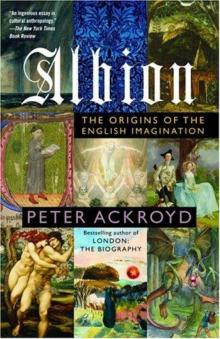 Albion: The Origins of the English Imagination
Albion: The Origins of the English Imagination The Fall of Troy
The Fall of Troy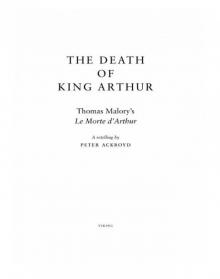 The Death of King Arthur
The Death of King Arthur The Trial of Elizabeth Cree
The Trial of Elizabeth Cree London: The Biography
London: The Biography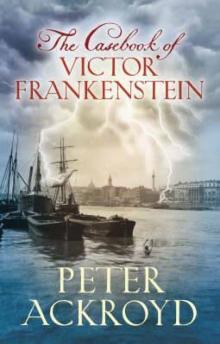 The Casebook of Victor Frankenstein
The Casebook of Victor Frankenstein Hawksmoor
Hawksmoor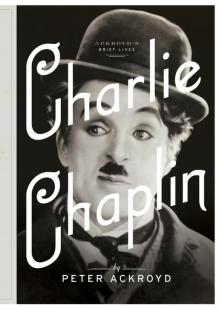 Charlie Chaplin
Charlie Chaplin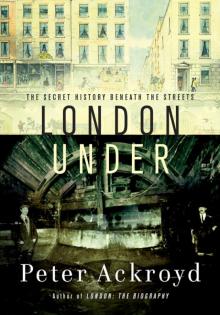 London Under
London Under